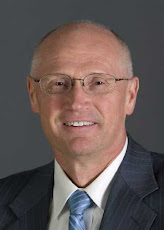The Detroit News is highlighting ideas from various groups to promote discussion on reform, restructuring government and the economy.
Idea 20 : Cap school employee health benefits and/or enroll them in health savings accounts.
Idea 14: Consolidate health care coverage for all public employees in Michigan in a single insurance pool.
Idea 19: Transition newly hired Michigan teachers to a defined contribution retirement system or 401(k).
All three of these ideas attempt to control costs of benefits, yet in ways that do not infringe on the results of years of collective bargaining between the teachers’ unions and the local school districts.
The typical employee share of the health insurance cost is 5 to 10 percent, compared with an average of 25% in the private sector. With statewide school health insurance expenses of $1.93 billion in 2008, increasing the percentage to that of the private sector would save more than $290 million a year. Moving all school employees to high-deductible Health Savings Account plans would save even more -- as much as $450 million in the first year and $26 billion through 2021, according to a Mackinac Center for Public Policy analysis.
An alternative approach to controlling rising health care costs would be to create a health insurance pool for all public employees which is believed would cut administrative costs and provide a larger number of customers to negotiate lower rates. This was a Republican idea which was going nowhere until House Speaker Andy Dillon (D) came out publicly this summer in favor of such an approach. See the Hays Group 2005 Report on the Feasibility and Cost-Effectiveness of a Consolidated State-wide Health Benefits System for Michigan Public School Employees.
Dillon’s white paper estimated that pooling health insurance would save up to $900 million a year, versus an estimate by the American Federation of Teachers and International Union of Operating Engineers in 2005 of only $156 million to $223 million a year for teachers (or a 7 percent savings). Applying the 7 percent savings across all government and school employees amounts to more than $500 million a year. Whichever estimate is correct, and it is impossible to say ahead of time which will be more correct, as the savings will depend on the details of the proposals enacted, the savings appear worthwhile to achieve.
A second expensive benefit is the teachers’ retirement plan.
The Michigan Public School Employees' Retirement System (MPSERS) provides pension and other post-employment benefits to more than 160,000 retirees and beneficiaries. There are 715 participating employers, including K-12 districts, public school academies, district libraries, tax supported community colleges, and seven universities. Under the current “defined benefit” plan, each of which is required to contribute the full actuarial funding contribution amount to fund pension benefits for its employees. (1.5% times the years of service times the highest three year average compensation, plus qualified retirees get health insurance coverage.) As the investment yield rises and falls, and estimates of retirees’ health care costs fluctuate, the actuaries calculate the contribution necessary to fully fund the plan, with a current rate of almost 17% of each employee’s wages (and projected to rise even higher).
The recommendation is to switch to a “defined contribution” plan, where the employer would contribute a set amount each year, and the ultimate benefit the employee would receive would depend on how well the investment of the contributions do. In short, the risk of market variation is shifted to the employee. The contribution rate might also be somewhat less than current and forecasted contribution rates.
The Citizens Research Council of Michigan in July, 2009 said in Michigan State and Local Government Retirement Systems, page 51:
“Transitioning newly hired Michigan teachers to a defined contribution retirement system would provide a much-needed structural reform to the state budget and prevent long-term legacy costs that are unsustainable for the Michigan education system and state budget. . . .
However, the transition from closing a defined benefit plan to new entrants, and placing all new hires in a defined contribution plan, normally requires ongoing contributions to both plans that may entail an increase in overall pension contributions for a number of years, so careful actuarial and budget analysis is critical to informed decision-making.”
The problem with high and rising MPSERS contribution rates is nothing new, with the Citizens Research Council forecasting significant funding difficulties in its 2004 report Financing Michigan Retired Teacher Pension and Health Care Benefits, A step in the right direction since then has been switching to a more actuarially sound “graded premium” plan for the retirees' health benefits. Under this change, retirees are required to contribute to the health insurance cost on a sliding scale based on the number of years of service, as compared with needing to contribute only 10% once vested after 10 years of service regardless of whether the years of service accrued were 10 or 35.
Nonetheless, the burden of the current plan is far above what private industry carries; in other words, the benefits are far richer than private sector employees enjoy.
The Michigan Education Association, the state's largest teachers and school employee union, already runs its own health insurance pool through the Michigan Education Special Services Association, which covers more than half of public school and community college employees. The MEA opposes any increase in the teachers’ share of the cost, the pooling of the health care plans, and transition to a contributory retirements system.
As much as we all like individual teachers, we must push for every efficiency in government that we can, in light of the scarce dollars we have to spend. Increasing the school funding by raising taxes in the face of an economic downturn to continue unsustainable benefit programs for teachers is not only politically unpalatable, but also counterproductive in encouraging job growth in Michigan.
Comments?
Subscribe to:
Post Comments (Atom)


This comment has been removed by a blog administrator.
ReplyDelete